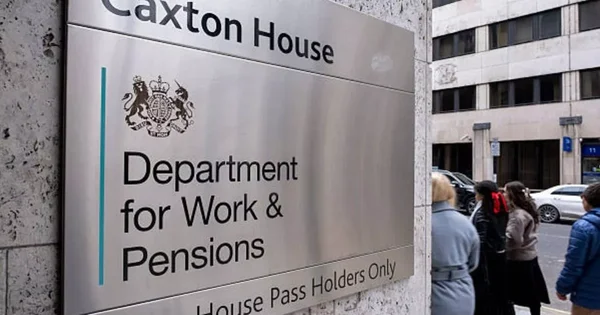Juggling work and family life is expensive enough without worrying about tax on your child care costs. The good news is that the UK tax system offers several ways to reduce what you pay.
From tax-free childcare accounts to employer voucher schemes, there are options to help working families. Understanding these schemes can save you hundreds of pounds each year. While these schemes cover a broad range of families, it is important to note that some disadvantaged or low-income families risk missing out on the benefits of government-funded early childhood education.
In this article, we’ll cover everything you need to know about child care tax relief, eligibility requirements, and how to claim your savings. The government’s action in rolled out these services is a crucial step in ensuring that every child gets the best possible start in life, and that no parent has to choose between work and family due to the cost of care. As the chief executive of a leading early years organisation has pointed out, strong leadership and advocacy are essential to secure ongoing funding and policy improvements for families and children.
We’ll also explore which option works best for your specific situation.
Introduction to Child Care Tax Relief
Child care tax relief is a lifeline for working parents across England, helping to ease the financial pressures of balancing work and family life. The government’s commitment to supporting families is clear through its funded childcare scheme, which offers up to 30 hours of free childcare per week during term time for eligible parents. This support is available for children from as young as nine months old until they reach school age, giving families the flexibility and peace of mind they need to manage their daily lives.
By making free childcare accessible, the government aims to empower parents especially mothers to return to work or increase their working hours without the worry of high childcare costs. Experts agree that this kind of support not only benefits individual families but also strengthens the wider economy by enabling more parents to participate in the workforce.
For many, this means a real opportunity to improve their quality of life, pursue career goals, and provide a stable environment for their children.

What counts as child care for tax purposes?
Child care includes any supervised care for your children while you’re at work. This covers registered nurseries and pre-schools that qualify for most tax relief schemes.
Approved childminders with Ofsted registration are included too. Additionally, after-school clubs and holiday play schemes often count if they’re properly registered with the relevant authorities. These registered providers offer a comprehensive and reliable childcare service, giving parents peace of mind.
Nannies and au pairs may qualify if they meet specific registration requirements. Some breakfast clubs at registered providers are also eligible for tax relief.
However, babysitting services typically don’t qualify for tax relief schemes. The key requirement is that your provider must be registered or approved by Ofsted or equivalent bodies.
An effective way for parents to identify eligible child care providers for tax relief is to check for proper registration or approval status.
How does Tax-Free Childcare work?
Tax-Free Childcare is the government’s main support scheme for working parents. The government adds 25p for every £1 you pay into your online account.
You can receive up to £2,000 per child each year in government contributions. For disabled children, this rises to £4,000 annually, providing extra support where it’s needed most.
Both parents must be working and earning at least the minimum wage to qualify. You pay your child care provider directly from the online account the government sets up for you.
The scheme covers children up to age 11, or up to 17 if they’re disabled. However, you cannot use Tax-Free Childcare alongside childcare vouchers from your employer.
One parent recently told us they saved over £1,800 last year using this scheme. The key is remembering to top up your account regularly to maximise the government contributions. By keeping track of your payments and contributions, you can stay on track to make the most of your savings and ensure you receive the full government support available.

Can I still get childcare vouchers through work?
Existing voucher schemes closed to new members in October 2018. However, current members can continue using their employer voucher scheme if they wish to keep the arrangement.
You save income tax and National Insurance on voucher payments through salary sacrifice. The maximum saving is around £933 per year for basic rate taxpayers.
Higher rate taxpayers can save up to £1,196 annually through these schemes. Furthermore, some employers offer additional benefits alongside the vouchers, making them particularly attractive.
Remember, you must choose between vouchers and Tax-Free Childcare as you cannot have both. Compare the potential savings from each before making your decision.
What child care costs can I claim through Universal Credit?
Universal Credit covers up to 85% of eligible child care costs for qualifying families. The maximum monthly amounts are £646 for one child, or £1,108 for two or more children.
Support is available for families with babies, ensuring early access to childcare for infants. Government-funded childcare and Universal Credit can also cover children as young as two year olds, helping families benefit from early childhood education and care.
You must pay the provider first, then claim the money back from Universal Credit. Both regulated childminders and nurseries are covered under this system, providing flexibility for different care arrangements.
You need to be working or about to start work within the next month. Additionally, the costs must be for approved or registered child care only to qualify for reimbursement.
The process typically takes a few weeks, so ensure you can cover the initial costs. Keep all receipts and payment confirmations as evidence for your claims.

How do I choose the best child care tax option?
Compare potential savings from each available scheme carefully before making your decision. Tax-Free Childcare often works better for higher earners with substantial child care costs throughout the year.
Childcare vouchers may suit those with lower child care expenses or specific employer arrangements. Universal Credit recipients should claim child care costs through that system first, as it typically offers the best value.
Consider your total annual child care expenses when making your decision. Additionally, think about how your circumstances might change during the year, as this could affect your eligibility.
What records should I keep for child care tax claims?
Save all receipts and invoices from your child care provider throughout the year. Keep records of payments made through Tax-Free Childcare accounts or voucher schemes for future reference.
Store evidence of your child care provider's registration details and credentials safely. Furthermore, maintain copies of any correspondence about scheme applications or changes to your arrangements.
Document any changes to your working hours or child care arrangements immediately. Keep bank statements showing child care payments for at least six years, as HMRC may request these.
Digital copies are fine, but ensure they're backed up securely. Having organised records makes claiming much easier and faster when you need them.

Ready to simplify your tax affairs?
Pie is the UK's first personal tax app, helping working individuals tackle their tax challenges efficiently. As the only self assessment solution offering integrated bookkeeping, real-time tax calculations, simplified returns, and expert advice when you need it, Pie makes tax season less stressful for busy parents.









